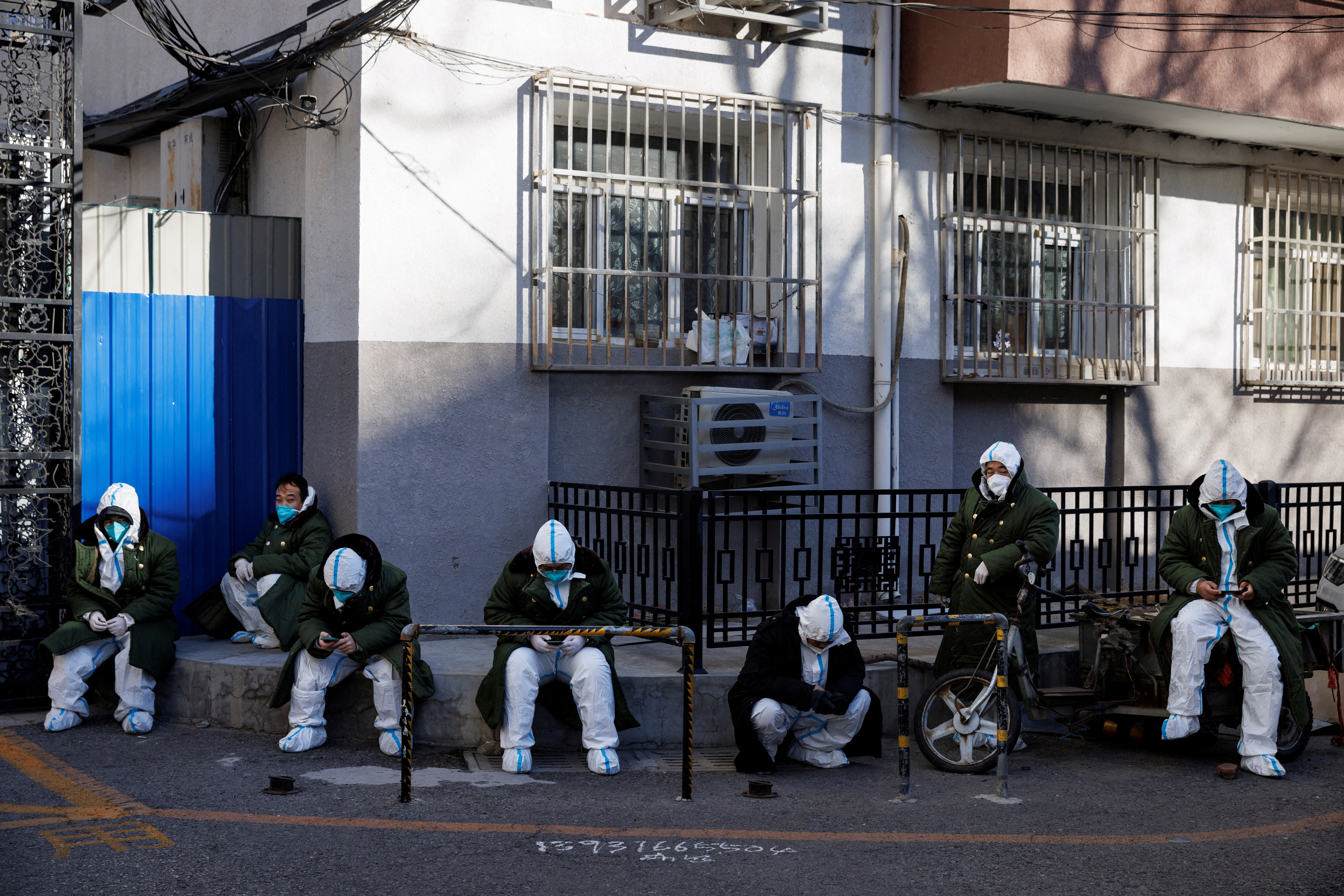Deven Mantz graduated from Minot High School in western North Dakota with his class of 2009, and worked home construction in the first few years of the Great Recession. Looking for something with more stability, or something that came with a bigger payday, he explored the two most promising options facing people in his area. “It was either go to the oil fields, or go to the railroad, so I kind of had to make a choice,” Mantz said.
Each had attractive elements. The working and living conditions in the oil fields were tough, but the money in those heady days was enticing, with six-figure annual payouts on offer. The railroads, meanwhile, offered solid pay, much better benefits — if, notoriously, no sick days — and far more stability.
By 2011, the Warren Buffet-owned BNSF was hiring in earnest. The policy known as precision scheduled railroading, which aimed to drive staffing down to the bare minimum and leave trains idle as little time as possible, had the expected effect of burning through the workforce. So even as the company was purposely shedding workers, it was also hiring at a rapid clip. Mantz went with the railroads, and in June 2011, he started as a sectionman – a basic laborer, tasked with doing whatever was needed to fix the tracks well enough so that trains could run over them. “I got in at a pretty good time. They started hiring right then and then they didn’t stop hiring after that, so I got a lot of people beat on seniority,” Mantz said. “A lot of people on the oilfield got laid off.”
Becoming a sectionman meant he was now a member of the Brotherhood of Maintenance of Way Employes Division of the International Brotherhood of Teamsters (BMWED). It not only introduced him to his affiliated trade unions – who sometimes derisively refer to them as “maintenance in the way” for holding up their trains – it made him part of the next chapter of a roughly 150-year history that is reflected in the weird spelling of “Employes” in the craft union’s name.
The union was founded in the 1880s as a life insurance company that sold policies to the foremen – white men who oversaw largely Black workers, giving themselves the title of “track master.” The life insurance collective evolved into a union that negotiated pay with the carriers, and the foremen recognized they’d have more power united with those they oversaw. Black workers continued to be treated deplorably, though, until the Congress of Industrial Organizations, a radical industrial union federation, began encroaching on their territory. The pressure from the CIO forced the BMWED to become just inclusionary enough to retain its members, though the title “track master” remains.
From the time the first tracks were laid in the United States, the railroads have been the scene of some of labor’s bloodiest and most pivotal struggles, with strikes inevitably crushed by local and/or federal police and military power. In 1926, in order to enforce peace between capital and the railroad workers, Congress passed the Railway Labor Act, which now also includes airline workers. The law allows Congress and the president to force an agreement on the two parties whether they have collectively reached a contract or not, and has been deployed largely as a weapon against workers. In exchange, the law also gives unions legal recognition. It’s a recipe for labor power atrophy: With the hammer of Congress always in the wings, bosses have little incentive to negotiate in good faith. And with workers legally locked into a panoply of sprawling unions, labor leaders have felt little pressure to deliver for workers. The last railroad strike – actually a lockout – came in 1992 and lasted just two days.
When Mantz arrived at work, there was no sign of the union. He hunted for a copy of the union contract, but nobody could tell him where he might find one. A hundred years of atrophy had left the union a hollow shell. Yet in July 2015, an organizer named Carey Dall traveled to Minot to meet with workers interested in becoming more active in the union, one of the first such trainings Dall had done in an unusual and experimental new role.
Curious, Mantz showed up. What he heard that day changed his life.

Activists, workers rights groups and coalition of unions, attend a rally for railroad workers on December 7, 2022 in New York City.
Photo: Leonardo Munoz/VIEWpress via Getty Images
After the tea party wave of 2010, BMWED President Freddie Simpson and other heads of the 11 craft unions that make up the representation for the railroad workers began to worry about the rise of the GOP. That concern heightened when Republicans seized the Senate in 2014, giving them full control of Congress.
Simpson decided his union needed to do something unusual: bring in an outsider to organize the union from the bottom up. For that, he ended up turning to Carey Dall, who’d begun his career organizing bike messengers before becoming a member of the Longshoremen. “They took a look at the possibility of the Republicans taking the trifecta in federal government, and thought, holy shit, the union shop clause in the Railway Labor Act might get undone,” said Dall. “And if that happens, are we really going to be able to hold the membership? And the answer was, we can’t assume that we can.”
Bringing in a militant, radical organizer like Dall had obvious benefits – the union was withering on the vine, and something had to be done to save it – but also obvious risks. “The problem with organizing is that once you start educating people and involving them and listening to them and asking them to take part in the planning of the strategy — once you started developing that portfolio of skills broadly, all of a sudden you have people who may not think their elected officers are doing a very good job,” Dall said. “It’s very risky, unless you happen to be a really good officer.”
Because the trackmen don’t work in warehouses or in large groups, organizing meant endlessly traveling to meet with a handful of workers at a time. Bouncing from coast to coast, Dall said, he’d be lucky to hit 150 workers total in a trip that lasted several weeks. Dall’s internal organization was staffed up and called the Communication Action Team (CAT) and modeled after contract action teams that form up to let workers know about the contract talks. The idea was to make that engagement and mobilization a permanent part of the union DNA.
Without an organized rank and file, a strike is impossible, and BMWED was building toward it.
Contract negotiations for the railroads stretched all the way to 2018, and for the first time in a serious way, BMWED workers were out in force, flexing muscle.
Tom Modica started with Norfolk Southern as a mechanic at around the same time Mantz signed on with BNSF, and after awhile he tried to figure out where the union was. Eventually, he and a coworker found the local lodge and showed up for a meeting, and found them going to war over sweatshirts. Apparently, at the previous meeting, a motion had carried that all present ought to get free sweatshirts, and those at the new meeting were there to protest the unfairness and self-dealing. “They had a knock-down-drag-out fight about a sweatshirt,” he recalled.
He later learned about Dall’s CAT operation, which to him sounded like a better route to worker empowerment, and he sent in a note saying he wanted to learn more. A few months later, one of Dall’s deputies arranged a gathering outside Modica’s shop, with Modica going in and out to bring people to meet with the union organizers. “They did like a little parking lot meeting, and it’s the first time anybody had ever seen a union rep on property,” Modica said.
Word of what was going on inside BMWED began seeping out to the allied unions. Ross Grooters is now co-chair of the Railroad Workers Union, a caucus trying to pull in members from all unions in order to present a united front. He’s in a different union, but began hearing about the CAT’s success in engaging workers and turning them into militant and active members. He invited Dall in 2016 to come speak to a gathering of his fellow members to see what they could learn from what the BMWE was doing. He now describes Dall as a “mentor” to him and many others.
Infighting among the trade unions and allegations of corruption frayed the solidarity that might have positioned them for a better bargain. “In that round of bargaining, the trainmen — the BLET and the conductors — sold us down the river, by agreeing voluntarily to an agreement in mediation, where they conceded heavily on health care,” Dall complained, in a swipe not without some merit, but one that also epitomizes the rivalries among the rival craft unions that must also negotiate together.
The CAT, though, had been working, bringing out picketers in a union that hadn’t previously shown serious public energy. “It was a wildly successful dynamic,” he added, where “we had a day of informational picketing where we had over 300 informational pickets around the country – 33,000 workers leading the charge. I mean, some of those lines are three or four people, and some of them were 75 to 80 people, but it showed this real commitment of the rank and file and the commitment of the national union to organize the rank and file.” Without an organized rank and file, a strike is impossible, and BMWED was building toward it. Ultimately, higher-level union leaders agreed to send the contract to arbitration, and workers had no say in the final deal, as dictated by the terms of the Railway Labor Act.
Angry workers vowed that would never happen again. At the next national convention, they tried to amend union bylaws to block labor leaders from sending a contract to arbitration without approval from workers, but the motion was defeated. By 2020, as PSR — “precision scheduled railroading,” a misnomer to describe the carrier’s effort to slash staff to the bone — continued to take its toll on dues thanks to the outflow of unionized workers, the CAT began to be wound down and Dall was eventually fired. Dall said the project cost $12 million over the seven years it ran, and leadership cut it amid a round of austerity. “It takes that kind of input to be able to get something out the other end.”
“There’s a lot of traveling, there’s a lot of people involved, it got kind of expensive, and you’ve lost a lot of membership dues,” Mantz lamented. “Some of us did see it as a path to the future and were kind of disappointed to see that go.”
So Mantz, Modica, and other workers who’d been radicalized in the process decided to keep it going without financial backing, forming the BMWED Rank And File United in 2021, getting it officially chartered as a caucus in early 2022. “We just don’t get paid to do it,” Mantz said.
At the 2022 convention, workers again pushed to block union leaders from unilaterally sending a contract to arbitration, and this time they won. The militant rank and file was starting to see results. “We’re not in the same industry we were in three years ago,” explained Grooters, saying the collision of Covid and the acceleration of the staff reductions from PSR have fundamentally transformed the job and led to a surge in worker discontent.
BMWED Rank and File, at the same convention, said Modica, pushed through bylaws that required rank-and-file workers to be on bargaining committees, to allow workers access national executive board minutes, and several other measures aimed at democratizing the union and shrinking the space between leadership and workers. At the lower federation level, several of their candidates won elections to leadership posts, and they won more bylaw changes that opened up union governance to members and barred nepotism among leaders. They’ve made direct election of leaders – one worker, one vote – a key demand, which would force more responsiveness onto union brass.

Teamsters Local 25 President Sean O’Brien, the new general president elect of the International Brotherhood of Teamsters, speaks during the Teamsters Local 25 monthly meeting on November 21, 2021 in Charlestown, Massachusetts.
Photo: MediaNews Group via Getty Images
Just two of the 12 railroad unions belong to the International Brotherhood of Teamsters, but the Teamsters have played an outsized role in the fight. The railroad fight marks the second major Teamsters loss in recent years, after it waged what many workers saw as an unsuccessful contract fight against UPS that ended in 2018. Jimmy Hoffa Jr., while he was still president, had named Sean O’Brien, a powerful Teamster figure from Boston, to lead the negotiations in 2017. Hoffa had long been the subject of a challenge from below organized by Teamsters for a Democratic Union — a reform caucus that was also offering support for Mantz and Modica’s Rank and File United. (The challenge was long-running: I moderated a 2011 debate for the Teamsters presidential contest that included a TDU challenger, at which Hoffa Jr. was a no-show.)
The year before Hoffa named O’Brien to head the negotiating team, he had survived a startlingly close challenge from the reform candidate, Fred Zuckerman, winning by just 6,000 votes out of 200,000 cast. (Zuckerman actually narrowly won in the U.S. but lost thanks to Canadian votes.) O’Brien invited Zuckerman and other Hoffa critics onto the UPS negotiating team; Hoffa demanded he kick Zuckerman off; O’Brien refused; Hoffa ousted his former ally O’Brien. The new committee went soft on UPS and agreed to a contract that was rejected by a majority of workers. Teamsters bylaws required a two-thirds vote to reject it, so it went through. But it came at the cost of increased anger among the workers. At the next convention, TDU was able to change the two-thirds rule, and O’Brien launched a campaign for president against the Hoffa machine, with Zuckerman running for the number two spot. In 2021, the reform movement shocked the labor world by ousting Hoffa’s cronies and beating his hand-picked successor.
O’Brien brought a new style of leadership to the Teamsters. (After the railroad fight was lost, he publicly called Sen. Joe Manchin, the only Democratic senator to vote against adding sick days to the proposed contract, a “coward.”) O’Brien was sworn in in March 2022, and as one of his first acts, he used his political capital with the White House and Labor Secretary Marty Walsh – the former Boston mayor had long been a political ally — to ask that railroaders be let out of mediation and have the talks put before a presidential emergency board, where they thought they’d be on favorable terrain.
The unions’ bet on President Joe Biden, Labor Secretary Marty Walsh, and Transportation Secretary Pete Buttigieg was misplaced.
The Biden administration had installed pro-union leadership in the NLRB, which had already ruled in several high-profile disputes in favor of workers. Now, Dall said that the Biden administration even allowed the rail unions to name the majority of the officials overseeing the PEB. Dall’s BMWED wanted to break the mold and name progressive economists, social scientists, or the like. “Maintenance of Way, when they were asked by President Joe Biden to furnish a list of people they wanted on the PEB, came up with people like Robert Reich. The rest of rail labor came up with a list of fucking arbitrators,” Dall said.
Other unions pushed back, and Reich ultimately didn’t make it on. And the unions’ bet on Biden, Walsh, and Transportation Secretary Pete Buttigieg was misplaced. Biden, to his modest credit, forced a single paid personal day into the contract, and Walsh added additional sweeteners. Through the PEB, the BMWED won expense reimbursement while on the road, a huge concession from the bosses. Until now, as the PEB noted, even if workers were required to travel from Illinois to Nevada for work, as happened, the worker wouldn’t be adequately reimbursed. “Employees should not be expected to have to pay their own way to get to a remote site to perform work,” the board wrote in siding with the BMWED, a set of concessions the carriers estimated would cost them $83,000,000 annually. “The cost of traveling is a cost of doing business based upon the business model chosen by the Carriers to have work performed, not some benefit to the employees.” But there was no significant budging on sick days, pay, or health benefits.
In September, the contract was sent to the membership of the 12 unions. The Rank and File United caucus didn’t take an official position, but its leaders laid out why it wasn’t the best deal possible. “We want to be the education tool that makes people realize that they can have better, and they should be able to get better if they organize their own workplace,” Mantz said. The RWU surveyed its members, found the vast majority opposed, and decided to run a campaign against it.
In the end, 6,646 BMWED workers voted to reject it, while 5,100 backed it. Two other large unions, one representing signalmen and the other representing conductors, brakemen, yardmen, and others, voted it down. A fourth, a boilermaker union with about 300 members, also said no. The four combined unions meant that a majority of workers had rejected the offer.
Having played the Biden card, union leaders were left with nothing. Corporate news outlets began running frightening stories of the economic and safety implications of a rail strike or a lockout — water would become unsafe to drink, medicine wouldn’t arrive, $2 billion a day up in flames, etc. — and Biden did what the Railway Labor Act allows.
On November 28, he sent the deal straight to Congress. “I am calling on Congress to pass legislation immediately to adopt the Tentative Agreement between railroad workers and operators – without any modifications or delay – to avert a potentially crippling national rail shutdown,” Biden said in a statement. “As a proud pro-labor President, I am reluctant to override the ratification procedures and the views of those who voted against the agreement…Some in Congress want to modify the deal to either improve it for labor or for management. However well-intentioned, any changes would risk delay and a debilitating shutdown.”
That same day, House Speaker Nancy Pelosi sent a letter to her caucus telling them that a vote would be coming on the agreement, and that no changes would be contemplated. Union leadership had put all its eggs in the Biden basket, Biden had undercut them, and they had nothing left. Outside of the BMWED, few of the unions had taken on the level of internal organizing required to produce an engaged membership, and Pelosi could count on robust support from Republicans. That made progressive votes in the House nice to have, but by no means a necessity to pass the contract.
But the workers kept lobbying. Over the summer, Mantz and Modica had gone to the Labor Notes conference in Chicago. What had been a smaller affair in previous years turned into a popping celebration of the rise of worker militancy in 2022. With over 4,000 workers showing up, the conference sold out. There, Mantz met Labor Notes reporter Jonah Furman, and the two had stayed in contact. Elected by local members to be North Dakota legislative director, Mantz had been able to travel to Washington, D.C. in mid-November with 25 other railroaders to meet with members of Congress and lobby them on the fight they knew was coming. Furman told him he had friends in the offices of Reps. Cori Bush, D-Mo., and Jamaal Bowman, D-N.Y., and made the introductions.
Mantz brought three other railroaders with him: Voncha Halbert from Mississippi, William Cody from New York, and Corin Rodriguez from Illinois. The four pressed upon Bowman’s legislative team that the lack of sick days stood in for a host of other grievances, and that if the contract came to Congress, adding seven sick days was the top priority. Bowman began drafting legislation quickly, before Biden had moved to impose the contract over.
Jeff Joines, legislative affairs director for BMWED, spoke highly of Mantz’s lobbying effort. “Whatever he’s telling you, those are facts,” he said, adding that Mantz and his colleagues got 107 different meetings that week, with a prime focus on Senate Republicans. They came out of it with a number of hard GOP yeses, he said, but with a good number of soft yeses, as well. “We were hopeful that we were going to be able to get 10 or 11 [Republican senators] on the day of the vote based on conversations we were having back in November,” Joines said.
Even the Republican senators were stunned that the workers had no sick leave. But the question was how hard the railroads would fight.

US President Joe Biden signs a resolution to avert a nationwide rail shutdown, in the Roosevelt Room of the White House in Washington, DC, on December 2, 2022.
Photo: Brendan Smialowski / AFP via Getty Images
After Biden sent his version of the TA to Congress, Bowman’s office reached back out to Mantz to coordinate strategy. “I was like, ‘We want these seven days paid sick leave,’ and they’re like, ‘Okay, well, let’s do something,’ and that’s kind of where it began,” Mantz said. “It was just a last-minute Hail Mary. It was pretty great, how it all came together.” He reached out to his national legislative team and told them about Bowman’s plan; they were in touch with Sen. Bernie Sanders’s office to see if he could run a companion play on the Senate side. Biden and Pelosi had both said on Monday that no changes would be allowed to the contract, but by Tuesday, pressure was starting to build to allow sick days.
Congressional Progressive Caucus Chair Pramila Jayapal engaged Pelosi, and a deal to allow a second vote on Bowman’s proposal was struck. Holding two votes — the second as an “enrollment correction” – meant the legislation didn’t have to come back through the House if the sick days were rejected by the Senate. Bringing it back through the House would have had the advantage of allowing progressive lawmakers to cast a symbolic vote against it if the sick day move failed, but it also risked not getting a vote in the Senate. Senate Majority Leader Chuck Schumer was clear he didn’t want to come near the following week’s strike deadline, for fear carriers might begin locking out workers. Trying to get the bill to come back through the House so that progressives could go on record against a bad contract risked not getting a vote on sick days in the House.
In the House on Wednesday, 290 members of Congress — 72 more than the 218 needed — voted to approve the underlying tentative agreement. The sick leave was added by a vote of 221–207. The move by the House bought time that Sanders used to make sure he could get his floor vote on sick days, which the railroaders thought still had a shot if Republicans followed through on some of their pro-worker rhetoric.
Left-wing critics on Twitter lambasted progressives for voting for the contract, arguing that true socialists would never vote to impose a contract on workers to prevent them from striking. Rep. Alexandria Ocasio-Cortez, D-N.Y., took the brunt of the criticism for voting, along with most Democrats, both for the underlying contract – which workers had rejected – and the additional sick days, which the workers wanted. Once progressives had obtained the promise of a vote on sick days, the argument from critics goes, there was no reason to vote for the underlying contract since it had the votes even without them. And if it didn’t have the votes, all the better, as then workers would be able to strike to meet their demands.
The counter to that argument is itself strategic, Joines, Grooters, Mantz, and others said. If by some chance Republicans all voted no on imposing the contract as a way to make sure the sick-day vote didn’t come to the floor, the result would not be a strike. The result would be that Pelosi would then pull the sick-day vote, and put the TA on the floor solo – her original plan – and pass it with robust Republican support. “The only chance we had at obtaining sick leave was to pass both bills in the House,” the main account of the BMWED posted on Twitter. “Without passing both, sick leave was sunk. @RepAOC voted for both measures because it was our only opportunity to advance sick leave and have a shot. AOC has always had our back and we thank her.”
Ocasio-Cortez explained that she had been following the strategy of both the national union as well as Teamsters Local 202, in her district. A warehouse union, 202’s president is Dan Kane Jr., an ally of O’Brien and Zuckerman, and the warehouse members had worked closely with railroaders earlier that year when they had been locked out by carriers. In September, Kane invited Ocasio-Cortez to the warehouse for a Teamster Political Coordinators Meeting, where he introduced her to rail workers who briefed her on the ins and outs of the railroad fight, making connections that would come in handy after Biden made his move against the unions. The Teamsters donned Ocasio-Cortez in a sash and posted a photo of the meeting. On the day of the vote, Kane and Ocasio-Cortez spoke about the legislative strategy.
.@RepTimRyan of Ohio, Rep. Jackson Lee of Texas & Rep. @AOC of New York told attendees at the #Teamsters Political Coordinators Meeting that the concerns of working people must be front and center. #1u 1/4 pic.twitter.com/9MgnEDHXlY
— Teamsters (@Teamsters) September 15, 2022
Still, in a sign of how tense the environment became on Twitter amid the House vote, she was ridiculed for saying that she had spoken to national unions as well as local 202, which were alleged to be too far removed from the railroads to be worth hearing from. But that misunderstands the role of solidarity and organizing when it comes to leveraging power.
As Dall said, when the chips are down, well-organized workers need to be able to draw on any and all allies, especially including those in their own international. “In any moment, you have to have [the membership] ready to take action at the point of production. We call that structural power. But you also have to have what we call associational power,” he said. “You have to have comprehensive campaigns that take years to develop, where you’re developing friendships, so that when push comes to shove, and the shit’s about to hit the fan, you’ve got friends, like the environmental community, the civil rights community, etc, etc, raising up and going fuck these railroads.”
Critics of the maneuvering in the House argue that the sick days were always doomed in the Senate, but the workers who’d been lobbying the upper chamber had reason to be hopeful. On that Tuesday, November 29, ahead of a House or Senate vote on Bowman’s measure, Sen. John Cornyn, R-Texas, floated the possibility that there could be substantial support for the sick days. His comment wasn’t off the cuff, but was the product of deep engagement by the railroad workers. But the railroads came down hard, and the Chamber of Commerce announced it would “score” the vote, meaning anybody who voted for it would be punished come election time. Four of the hard yeses – not so hard after all – evaporated after the Chamber threat, Joines said, with two of them saying it was specifically because of the Chamber letter. Then Manchin announced he was a no. “That was a blow to us,” said Joines, the BMWED’s top lobbyist. The workers who had spent the previous months walking the halls of Congress spent the last few weeks being called “naive” and “idiotic” by left-wing podcasters for their belief that a win was possible.
“I hope that the folks that read this don’t think that we feel like we were betrayed by anybody.”
While the week-long fight was good at raising awareness, Joines said, it was never intended to be mere theater. “This whole thing wasn’t a dog and pony show,” he said. “We were serious about getting it passed the House, and we were serious about getting it passed in the Senate, and that was our only path.” He said that he’s seen some of the criticism directed at progressives who forced the sick days vote. “If it wasn’t for the work the progressive bunch did we never would have got the vote on the sick days. I hope that the folks that read this don’t think that we feel like we were betrayed by anybody, because this was what we had to do to get a vote on sick days,” he said. “When we got it passed in the House it elevated the plight of the railroaders and the lack of sick days to a level that it had never been before. It never never would have got there if it hadn’t been for folks like Bernie Sanders and AOC and all the other progressives out there.”
Modica said he understood the criticism of the House Democrats who voted for the first measure, which imposed the contract before the sick days were added. “The bills should have been one. That’s where Pelosi screwed up,” he said. “That’s when they put the amendment up which I heard Pelosi got pretty pissed about…The leverage they would have had would have been, pass the sick days or you’re getting a strike, but I guess they didn’t have enough support.” Joines agreed, saying the strike threat was undermined by Republican support for Pelosi’s effort to avert it. “It was never gonna happen, because there was enough Republicans,” he said.
Mantz, who still lives in Minot, is now a track inspector, and spends his days driving a pickup truck over the tracks looking for potential trouble. He said the focus of their strategy was on moving the sick-day fight over to the Senate, and he’s watched the online criticism about their strategy with bemusement. “There’s a lot of leftists that are doing that, they’re the ones who are mostly pissed about the whole thing, they’re not necessarily railroaders. Most of the railroaders actually are conservatives – with the building trades, it’s the same kind of thing. But a lot of guys have looked and said, Wow, some of these progressive people have been really great. I appreciate them for that, which is kind of astounding,” Mantz said, suggesting that many of the critics didn’t understand that the PEB was always going to be implemented by Congress, and that a strike simply wasn’t happening. Much more work needs to be done before that’s a possibility.
Grooters, whose RWU called the whole debacle a betrayal by both parties and urged exploration of a third party, similarly said the hostility aimed at Bowman and others was misplaced. “We always knew we were going to be forced back to work by Congress. We just didn’t know when and under what terms. Rail labor isn’t concerned about the Squad, it’s such a non-issue for us. And yeah, it is a strategic question. And I can see pros and cons to what we did. And it was what we did in the moment. And yeah I get it. I get it. Is it strike breaking on the one hand? Yes. But it’s a distraction from the work that needs to happen,” Grooters said.
“I can’t find fault with congressional members that are being told by leadership on the one hand, put these people back to work, and the rank and file on the other who’s trying to lift up one demand saying, can we get just this one more thing? I think they kind of did exactly what they were being told from rail labor.”
Socialist Seattle City Councilwoman Kshama Sawant, one of the highest-profile critics of progressive Democrats in the House, dismissed the work of the rank and file caucus as not representative of workers more broadly. “There is no vote which is unanimous, you can always find one worker who is not for the strike action, who has conservative ideas,” she said on an episode of the podcast “Bad Faith,” where I was also a guest, arguing that the Squad members ought to be ejected from the Democratic Socialists of America for betraying workers. There had not been a vote of the membership, she said, so therefore the caucuses couldn’t be said to stand for workers.
Asked to respond to the claim that without a majority vote, they weren’t representative of workers more broadly, Grooters took a long pause before settling on a more diplomatic answer. “I’m trying to think about that a little bit more carefully, Ryan,” he said, saying simply: “I think we represent voices in our crafts and in our unions that are great enough to continue raising these issues, and that we ought to be paying attention to what workers in our organizations have to say and lift up their issues.”

Union activists and workers’ rights groups protest, to demand sick pay and union rights for rail workers, at Grand Central Terminal in New York, United States on December 7, 2022.
Photo: Fatih Aktas/Anadolu Agency via Getty Images
Some of the criticism, Grooters speculated, may flow from a lack of familiarity with how difficult and resource-intensive it is to organize a sprawling, isolated workforce stocked with a significant number of workers reflexively hostile to anything that smacks of progressive or socialist. “Even just trying to fit this extra thing into the life of yourself and your coworkers…It’s hard work. It takes time. And it’s really difficult on the railroad where you have not only 12 different crafts but but you’re working geographically so spread out.”
“I really can’t say enough how important it is to have a rank and file led coalition within your union,” Grooters said, “and I don’t care if it’s rail labor, or its its steel workers or auto workers, unless you have the voice of rank and file workers advocating for what you really need, then you’re letting leadership dictate that to you and they’re not always in the position to know what’s best. And so that needs to come from us on the ground and the BMWED rank and file caucus has done a good job of elevating railroad worker issues and their issues. And similarly, Railroad Workers United trying to bring all crafts into a conversation and work toward speaking with one loud voice and advocating for what railroad workers need. And I think that both organizations in this moment have done that.”
“Unless you have the voice of rank and file workers advocating for what you really need, then you’re letting leadership dictate that to you.”
Dall said that he was proud to see the remnants of his mobilization project bearing fruit. “These are collective struggles. But you know, we need to have really on-top-of-it individuals, too. Deven [Mantz] is just an incredibly energetic, bright, on-top-of-it railroader,” he said.
Mantz, once I began asking questions about his high school, realized he was becoming a central part of the story, and insisted that his role not be over-hyped. “It was a team effort,” he said.
Marilee Taylor, a recently retired engineer of more than 30 years, said in an interview with the YouTube host Sabby Sabs that she was heartened by the attention on the issue. “A year ago today, if you saw a rail worker, most people would go, oh yeah, that’s the one I wave to when I go by, but the issues would have been clear at all. It’s a very short time that we’ve actually been conducting a good fight,” Taylor said. “The issues are out there more than I’ve seen ever, with people saying, ‘What, you don’t have sick leave?’”
Conditions are so brutal, Grooters said, that the fight is worth it. “This has taken a large amount of time and energy and effort to do, but it is so critical if if I’m going to be able to live a life outside of the job,” he said.
Following the failed vote in the Senate, union leadership decided to make the next push an effort to get Biden to give paid sick leave through executive order. A letter has been drafted by members of Congress to push Biden to do it, led by Sanders in the Senate and in the House by Reps. Rashida Tlaib, Bowman, Don Payne and Cori Bush.
Even Wall Street is weighing in. On Friday, the Interfaith Center on Corporate Responsibility, which has over $4 trillion in assets, urged railroads to give workers sick days. Sinning against workers, with the eyes of the world upon the carriers, can be bad for business. CSX announced it would not penalize workers for taking sick days.
All of a sudden, the long-moribund national leadership has snapped to attention, even announcing a rally in Washington for next week, where Sanders is expected to speak. Rank and file workers elsewhere are seizing on the discontent. Reece Murtagh, a Richmond machinist, announced his candidacy for the presidency of the 7,500-member Machinists District Lodge 19, looking to channel worker anger at leadership’s failure, Furman reported for Labor Notes.
Dall said that if the unions want to be ready for the next round of contract negotiations, they need to not just organize their rank-and-file, but re-organize into an industrial union capable of taking on big businesses like UPS or the railroads or Amazon, rather than stick with the old craft union model, in which workers in different jobs wind up represented by rival unions, rather than all workers in an industry organizing under a single union.
“Part of the problem here is the railroads have done one hell of a job at the point of hire,” he said. “Not only are they doing psychological profiling, but they’ve hired a bunch of folks from rural America who come from pre-industrial backgrounds, many of them are literally dirt farmers, who then end up in this crazy ass, Wall Street suckling industry. And making sense out of it is very difficult. You really need somebody who’s been around the block to help them understand how you wield power in that kind of situation and get good outcomes. And that’s just not what rail labor is about. The craft union dynamic is just really not up to the struggle.”
The post The Railroad Fight Was the Product of Eight Years of Militant Rank and File Organizing appeared first on The Intercept.
















